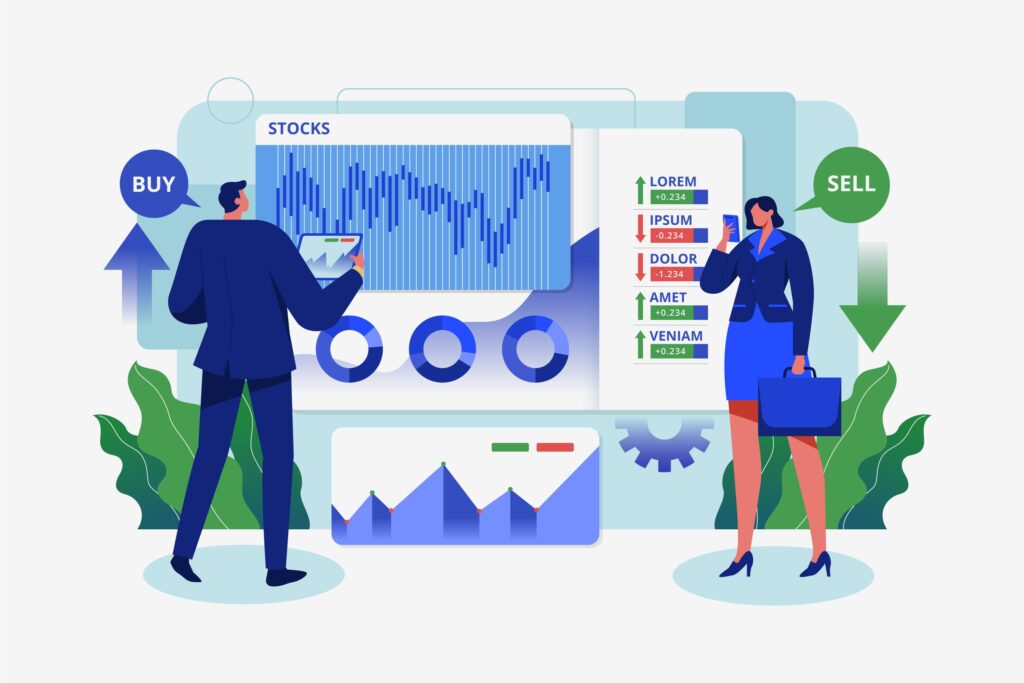Main Stock: Understanding Its Meaning, Importance, and Impact on Trading Success

What Is Main Stock?
The term main stock refers to the primary or leading stock in a company’s portfolio or within a specific market index. It can also describe the core securities that make up the foundation of an investor’s portfolio. In simpler terms, the main stock is the central asset that represents a company’s main line of business or the primary investment around which other assets are built.
For example, in a stock market context, Apple (AAPL) could be considered a main stock in the tech sector because it significantly influences market trends, investor behavior, and sector performance. Similarly, for individual investors, their main stock might be the largest holding or the one they rely on most for growth and stability.
Why Understanding Main Stock Is Essential for Investors
Main stocks serve as the backbone of investment strategies, especially for long-term investors. Recognizing which stocks hold this importance helps traders and investors make informed decisions. These Stocks are typically blue-chip companies, well-established, and financially stable.
Understanding the concept of main stock provides several benefits:
- It helps in building a diversified portfolio around strong assets.
- It ensures lower risk exposure, as main stocks usually have stable earnings.
- It provides a benchmark for portfolio performance.
- It helps identify market leaders that drive sector movements.
In essence, knowing which stocks are “main” can give investors a strategic advantage in a volatile market.

Characteristics of Main Stocks
Main stocks share some common features that distinguish them from less influential ones. These include:
1. High Market Capitalization
Mainstocks typically have a large market cap, representing well-known companies with global reach. Examples include Microsoft, Amazon, and Tesla.
2. Consistent Profitability
These companies often report steady earnings, even during economic downturns, making them attractive to investors seeking reliability.
3. Strong Brand Recognition
Mainstocks usually belong to companies with global reputations. Their brand power directly impacts stock price stability and investor trust.
4. High Trading Volume
Mainstocks are actively traded, meaning they have significant liquidity. This makes buying and selling easier compared to smaller, lesser-known stocks.
5. Regular Dividends and Growth
Many mainstocks offer regular dividends, which attract long-term investors. In addition, their consistent growth potential supports portfolio expansion over time.
The Role of Main Stock in the Stock Market
Mainstocks act as market drivers. Their movements can influence indices like the S&P 500, NASDAQ, or Dow Jones. When the prices of mainstocks rise or fall, they can cause entire sectors—or even the whole market—to shift.
For instance, when a mainstock like Apple or Google reports strong quarterly earnings, the tech sector often experiences a positive ripple effect. Conversely, poor performance from these companies can trigger widespread market declines.
Therefore, monitoring mainstocks provides investors with early signals about market trends and overall economic health.
How to Identify Main Stocks in a Sector
If you want to build a solid investment portfolio, identifying mainstocks in each industry is crucial. Here’s how you can do it effectively:
1. Analyze Market Leaders
Look for companies that dominate their industries—those with the largest market share and strongest brand recognition.
2. Check Market Indices
Stocks consistently featured in major market indices like the S&P 500 or NASDAQ-100 are often main stocks.
3. Evaluate Financial Stability
Mainstocks generally show consistent revenue growth, positive cash flow, and manageable debt levels.
4. Study Investor Sentiment
Pay attention to analyst ratings and institutional investor behavior. Mainstocks usually attract large-scale investment from financial institutions.
5. Monitor Long-Term Performance
Mainstocks show resilience during market downturns and long-term appreciation, making them reliable anchors for portfolios.

Benefits of Investing in Main Stocks
Investing in mainstocks offers several strategic advantages:
1. Lower Risk Exposure
Mainstocks are generally less volatile than small-cap or emerging market stocks, reducing investment risk.
2. Consistent Returns
Their stable earnings and dividend history provide predictable and steady income streams.
3. Portfolio Stability
Mainstocks balance out riskier investments, ensuring overall portfolio stability during uncertain times.
4. Long-Term Growth Potential
Due to their strong fundamentals, mainstocks typically deliver long-term capital appreciation.
5. Influence on Market Trends
Owning main stocks allows investors to benefit from market-leading momentum, as these stocks often lead bullish trends.
Main Stocks vs. Secondary Stocks
While mainstocks represent the foundation of an investor’s portfolio, secondary stocks are smaller companies or new entrants with high growth potential but greater risk.
- Mainstocks offer stability and long-term value.
- Secondary stocks may yield higher short-term returns but come with volatility.
Smart investors balance both, using mainstocks for stability and secondary stocks for aggressive growth.
How to Invest in Main Stocks
Investing in mainstocks can be done through different strategies depending on your goals and risk tolerance:
1. Direct Stock Purchase
You can buy shares of mainstocks directly through a brokerage account. This allows full ownership and dividend collection.
2. Index Funds or ETFs
Exchange-traded funds (ETFs) like SPY or QQQ include multiple main stocks, providing instant diversification.
3. Dividend Reinvestment Plans (DRIPs)
Investors can reinvest dividends from mainstocks to buy more shares automatically, enhancing compound growth.
4. Long-Term Holding Strategy
Mainstocks are ideal for long-term investment strategies, where short-term market fluctuations matter less than overall growth potential.
Common Mistakes to Avoid When Dealing with Main Stocks
Even though mainstocks are generally safer, investors should still be cautious. Avoid the following pitfalls:
- Ignoring diversification: Don’t invest all your money in one stock, no matter how strong it seems.
- Neglecting financial updates: Always review company earnings reports and news.
- Following hype blindly: Make data-driven decisions, not emotional ones.
- Overvaluing blue-chip stability: Even mainstocks can experience downturns, especially in market corrections.

The Future of Main Stocks in Global Markets
As global economies evolve, the definition of main stock continues to change. New sectors like artificial intelligence, renewable energy, and biotechnology are creating modern mainstocks that drive future growth.
For instance, companies like NVIDIA, Tesla, and Microsoft are shaping the next generation of mainstocks due to their innovation and dominance in emerging technologies.
Investors who can identify these evolving leaders early will gain a competitive advantage and position themselves for future success.
Conclusion: Why Main Stock Matters
The concept of mainstock goes beyond identifying big companies—it’s about understanding the core of market influence and building investment strategies around it. Whether you’re a beginner or an experienced investor, focusing on mainstocks can provide stability, consistent returns, and long-term growth.
By choosing the right main stocks and balancing them with complementary assets, you can secure your financial future and confidently navigate the stock market’s ups and downs.
Also Read: BetterThisWorld Money: A Complete Guide to Building Financial Freedom and Smart Wealth


One Comment